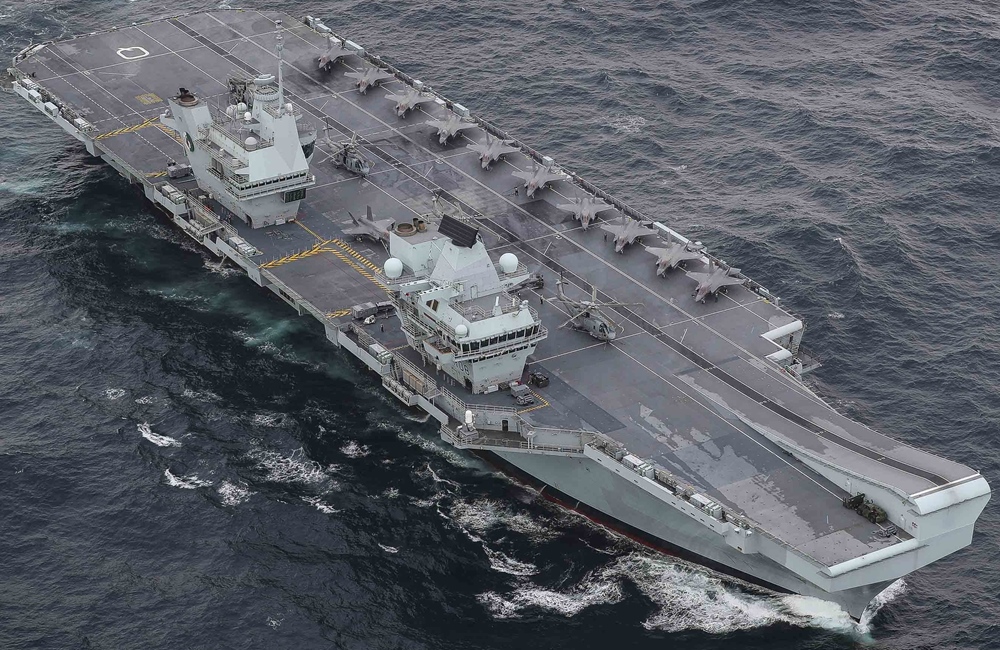The HMS Prince of Wales (R09) stands as a testament to the excellence of British naval engineering and prowess. This remarkable Queen Elizabeth-class aircraft carrier has captured the imagination of naval enthusiasts worldwide. In this comprehensive article, we delve deep into the history, design, construction, and operational significance of this formidable vessel. Join us on a journey through the seas of knowledge as we unveil the intricacies of this maritime marvel.
History
Namesake and Commissioning
The HMS Prince of Wales, named after HRH Prince of Wales, has a storied history that began with its commissioning on December 10, 2019. This significant date, which marked the 78th anniversary of the sinking of its predecessor during World War II, highlighted the continuity of this illustrious name within the Royal Navy. Sponsored by Her Majesty The Queen, this vessel has upheld the motto “Ich Dien,” signifying its unwavering commitment to service.
Construction Milestones
Construction of the HMS Prince of Wales commenced in 2011 at the Rosyth Dockyard, a monumental undertaking that culminated in the ship’s launch on December 21, 2017. This architectural marvel was assembled from 52 blocks crafted by six shipyards across the UK, a testament to the collaborative effort that went into its creation. The ship was handed over to the Royal Navy in 2019, marking a momentous milestone in its journey.
Design and Capabilities
Unique Design Features
Distinguishing itself from traditional aircraft carriers, the HMS Prince of Wales is tailored for Short Take-Off and Vertical Landing (STOVL) aircraft. Unlike carriers with catapults and arrestor wires, it is optimized to support the F-35B Lightning II stealth multirole fighters and Merlin helicopters. This design flexibility allows the vessel to adapt to various missions, including airborne early warning and anti-submarine warfare.
Strategic Importance
When on operational duty, the HMS Prince of Wales plays a central role in the UK Carrier Strike Group. This group includes escorts and support ships, serving as a potent instrument for carrier-enabled power projection. Its ability to carry a diverse array of aircraft, including Chinook CH47, Apache AH64, and Maritime Airborne Surveillance Capability (MASC) aircraft, reinforces its pivotal role in modern naval warfare.
Sea Trials and Operational Achievements
The Journey to Readiness
The path to operational readiness was punctuated by extensive sea trials and testing. Notably, the ship arrived at its home base in Portsmouth in November 2019, and its formal commissioning marked a historical moment in December of the same year. Since then, the HMS Prince of Wales has continued to make significant strides in enhancing the Royal Navy’s capabilities.
Operational Deployments
The ship’s operational journey was not without challenges. It experienced flooding in May 2020, described as “minor” by the Royal Navy. Subsequently, more significant flooding occurred in October 2020, leading to substantial repairs. However, the HMS Prince of Wales has persevered and is expected to be fully ready for front-line duties worldwide from 2023.
Aircraft and Versatility
Carrying Power
The HMS Prince of Wales boasts an impressive aircraft carrying capacity. It is designed to accommodate up to 36 F-35B Lightning II stealth multirole fighters, along with a variety of helicopters, including the AgustaWestland Merlin. This flexibility in aircraft composition allows for a wide range of mission profiles, from anti-submarine warfare to troop transport.
Extensive Aircraft Facilities
The carrier’s hangar below deck and two aircraft lifts further enhance its operational capabilities. These features enable efficient refueling, rearming, and maintenance of aircraft. Notably, the vessel’s design allows for CH-47 Chinook operations without blade folding and even accommodates the Bell Boeing V-22 Osprey tiltrotor, showcasing its adaptability.
Conclusion
In conclusion, the HMS Prince of Wales (R09) represents the pinnacle of modern naval engineering and operational versatility. Its unique design, rich history, and steadfast commitment to service make it a symbol of pride for the Royal Navy and the United Kingdom. As this majestic vessel continues to fulfill its role on the high seas, its legacy as a maritime powerhouse is destined to endure.



